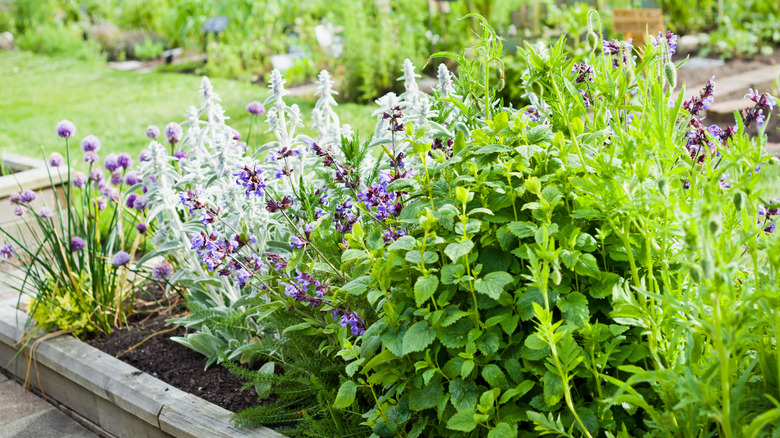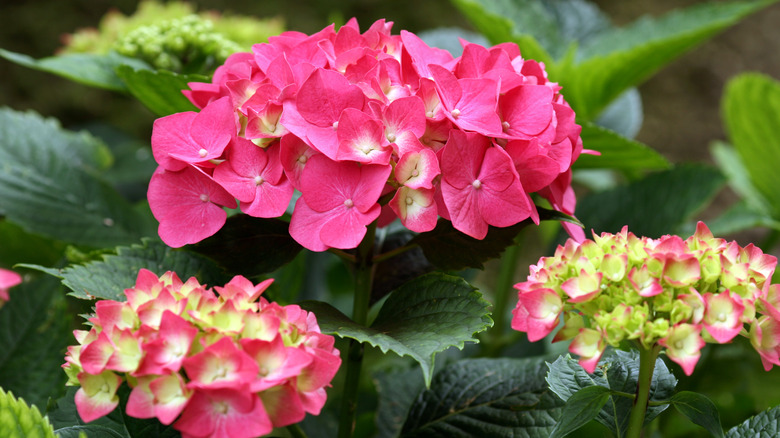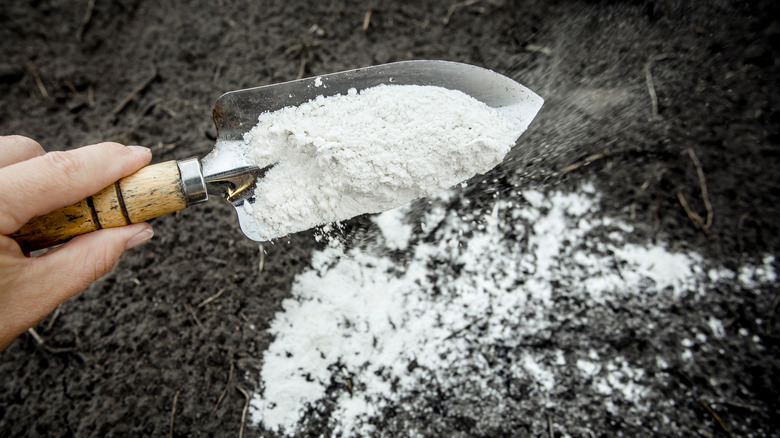Sprinkle This Unexpected Ingredient In Your Garden And Watch Your Plants Thrive
We may receive a commission on purchases made from links.
Did you know there's an ingredient you can add to your garden to help your plants thrive? You have probably heard of limestone before, but the lime powder made from this ground-up rock can be a powerhouse for plants, giving them a bit more support. Lime is not something you should add haphazardly because not all plants need it. This soil amendment changes the soil's acidity, measured in pH value, which is great for some plants. But for others, they won't do as well. There are a few reasons to add lime besides just changing the pH. It allows plants to uptake nutrients more easily and can help prevent your soil from drying out.
You'll want to test the pH before adding garden lime to your soil. You can find a soil pH tester on Amazon for about $21. This three-pack includes a pH meter, a total dissolved solids (TDS) in parts per million (PPM) tester, a soil moisture meter in electrical conductivity (EC), and a pH reader in one. It gives you everything you need to get started with testing your soil's pH.
Which plants like lime added?
The best pH for most plants is around 6.2 to 6.8. Because lime increases the pH of your soil, you'll only want to add lime if your soil is considered acidic. This would be soil with a pH below 5.5. There are some plants, however, that love more acidic soils. These plants include rhododendrons, blueberries, azaleas, holly, cabbage, broccoli, and gardenias. On the other hand, plants that benefit from less acidic or alkaline soil include lavender, chives, mint, rosemary, coneflowers, thyme, beans, hydrangea, lilac, clematis, and cucumber.
Garden lime is found at most stores that sell gardening supplies, and you can usually find it during spring or summer. The Epsoma Organic Garden Lime is available at Home Depot for roughly $8. This 6.75-pound bag covers 135 square feet and adjusts soil acidity for up to four weeks. In addition to changing soil pH for your plant's health, you can also use garden lime to change the color of hydrangeas. Because adding lime to your soil makes the soil more alkaline, it can also change the color of your hydrangea blooms to pink. This is due to the amount of aluminum ions that become available in the soil after adding lime.
Can you sprinkle lime on top of the soil?
Before you think of adding lime to your soil, you'll want to use a pH tester to test it — this determines if your soil even needs it, and if it does, you can apply the appropriate amount. You'll want to test a few soil areas where you plan to plant to get a better picture of your entire garden's pH. Then, make a few holes throughout your garden and make them all the same depth. Pour distilled water into the holes and stick your pH meter directly into them. Wait for the meter to come to a number, and that's your pH. If it's below 5.5, your garden may benefit from adding lime.
The best time to apply lime is after the growing season. Doing so in the fall allows for the most time for nutrients to soak into the soil. You can also apply lime during spring, but there's less chance for the nutrients to have time to incorporate into the soil. When it comes to applying lime, make sure you're wearing gloves and eye protection. You'll start by sprinkling it on top of the soil, creating an even layer. Next, you'll want to work it into the soil, digging down about a foot to make sure the lime is spread throughout the depth of the soil. Lastly, soak your soil with water — this is the most important step because, without water, the lime won't activate.


